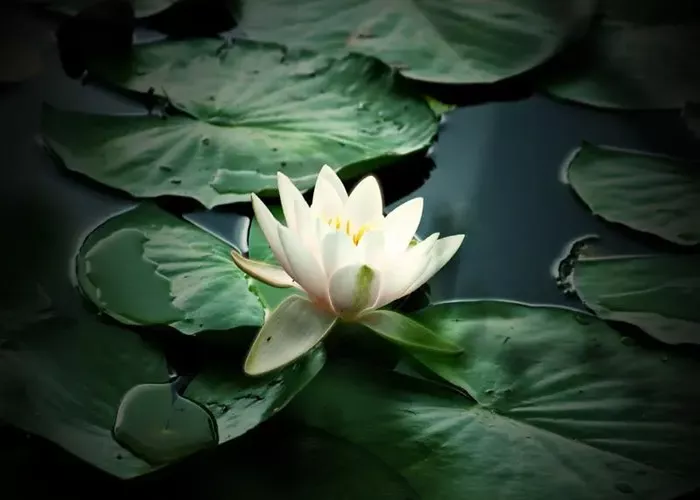In the natural waters, the water lily with its unique floating posture, adds a different style to the water scene. This plant not only attracts people’s attention with its elegant appearance, but also with its unique physiological structure and ecological adaptability, becoming a leader in aquatic plants. This paper will explore the reasons why water lilies can float on the surface of the water, from leaf structure, physiological characteristics to ecological habits, to reveal the mystery of water lilies in all aspects.
The Wonderful Structure Of Water Lily Leaves
The leaves of water lilies are the key to their buoyance. These blades are not only flat in shape and wide in surface, but also have a series of special structures to adapt to the water environment.
1. The air cavity structure of the blade
The upper part of the lily leaves is dotted with tiny air cavities, which are filled with natural air. Since gas is much less specific than water, these air cavities provide enough buoyancy for the blades to float easily on the water. The design of this structure not only allows the lily leaves to balance in the water, but also provides enough space for them to photosynthesize and make the nutrients they need to grow.
2. The mysterious role of protective film
The surface of the lily leaves is also covered with a natural protective film. This protective film can effectively prevent water from being absorbed or infiltrated into the leaf cells, thus maintaining the dry and buoyant leaves. This characteristic allows the water lily leaves to maintain their floating state even after a long time of immersion in water, and not be submerged by water.
3. Perfect combination of mucus and gas
The lower part of the lily leaves also secretes a mucus, which is accompanied by the release of a small amount of gas. These slime and gases can form a closed air bag structure, further increasing the buoyancy of the blade. When the blade is subjected to external force, the air bag structure can effectively buffer the impact and protect the blade from damage. At the same time, the air bag can also provide more buoyancy to the blade, making it more stable in the water.
Physiological Characteristics And Ecological Adaptation Of Water Lily
The reason why water lily can float on the water surface is closely related to its unique physiological characteristics and ecological adaptability in addition to the special structure of its leaves.
1. Strong root support
Although the lily’s leaves float on the surface of the water, its roots sink deep into the mud. These roots not only provide stable support for the water lilies, but are also responsible for absorbing nutrients and moisture from the water, providing the necessary nutrients for the growth of the plant. At the same time, the root system can also improve the water quality environment by secreting mucus and other substances, creating more favorable conditions for the growth of water lilies.
2. Flexible photosynthesis strategies
Water lilies are light-loving plants, and their photosynthetic process requires adequate sunlight. However, in aquatic environments, sunlight is often blocked and scattered by the water layer, resulting in reduced light intensity. In order to adapt to this environment, water lily leaves have a relatively high chloroplast content and are able to capture and use light energy more efficiently for photosynthesis. In addition, water lilies are also able to maximize sunlight exposure by adjusting the Angle and position of the leaves, thus improving the efficiency of photosynthesis.
3. Unique breeding methods
The reproduction mode of water lilies also provides a strong guarantee for their survival and reproduction in the water environment. The seeds of water lilies have a hard shell and are rich in nutrients, which can be preserved and germinated in water for a long time. At the same time, water lilies can also reproduce new plants quickly through asexual propagation, such as dividing plants and cutting. This reproduction method not only improves the reproduction efficiency of water lilies, but also enables them to quickly adapt and grow in different water environments.
Conclusion
The reason why water lily can float on the water surface is the result of its unique leaf structure, physiological characteristics and ecological adaptability. This plant not only shows strong vitality and adaptability in the aquatic environment, but also plays an important role in the ecosystem. In the future, with the continuous improvement of people’s awareness of water ecological environment protection and the deepening of research on aquatic plants, water lilies will play a more important role in water purification, ecological restoration and landscape beautification. At the same time, we also hope that more researchers and artists can pay attention to this beautiful plant, and jointly explore its more mysteries and values.
Related topics:
- What is the Flower for a July Birthday? Larkspur & Water Lily
- How To Preserve Water Lily Flower?
- What to Do with Calla Lily After Flowering?


